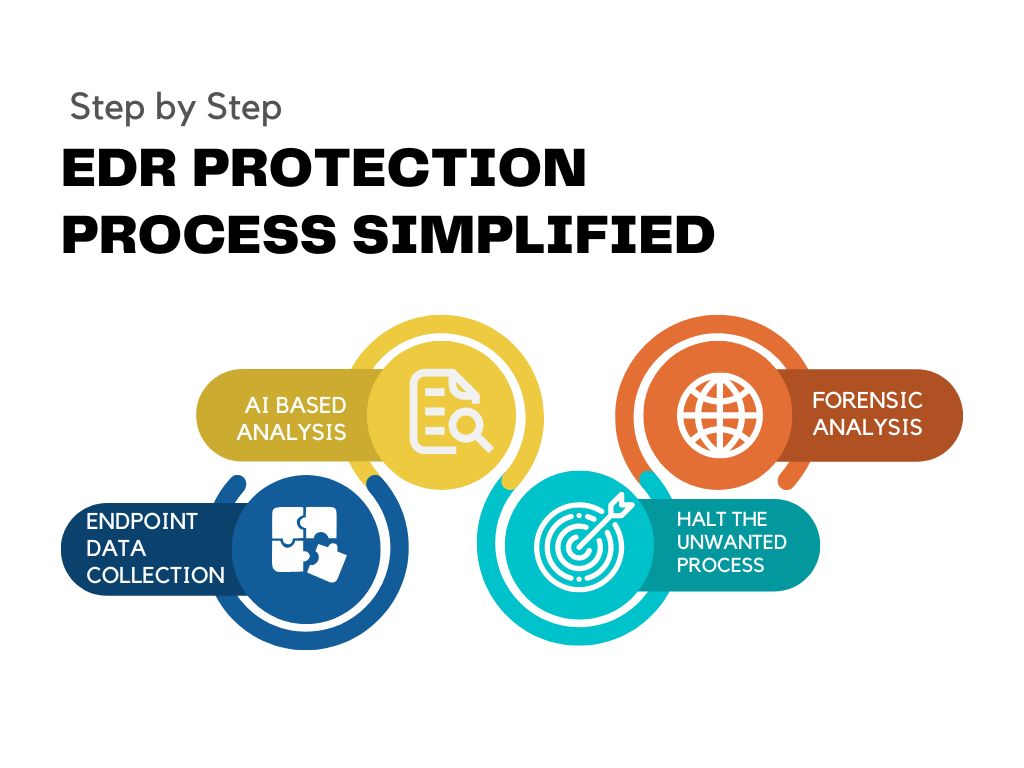
A brute force attack utilizes experimentation to figure login data, encryption keys, or observe a secret site page. Programmers work through all potential mixes wanting to figure accurately.
These attacks are finished by ‘savage power’ meaning they utilize exorbitant intense endeavors to attempt to ‘compel’ their direction into your private account(s).
This is an old attack strategy, however, it’s as yet compelling and famous with programmers. Since relying upon the length and intricacy of the secret key, breaking it can take anyplace from a couple of moments to numerous years.
What do hackers acquire from Brute Force Attacks?
Beast force assailants need to invest a touch of energy to make these plans pay off. While innovation in all actuality does make it more straightforward, you could in any case address: how could somebody do this?
This is the way programmers benefit from brute force attacks:
- Benefitting from advertisements or gathering movement information.
- Taking individual information and assets.
- Spreading malware to cause disturbances.
- Capturing your framework for noxious action
- Destroying a site’s standing
Benefitting from advertisements or gathering action information.
Programmers can take advantage of a site close by others to procure publicizing commissions. Famous ways of doing this include:
- Putting spam advertisements on a very much made a trip site to bring in cash each time a promotion is clicked or seen by guests.
- Rerouting a site’s traffic to dispatched advertisement destinations.
- Contaminating a site or its guests with action following malware – generally spyware. Information is offered to sponsors without your agreement to assist them with working on their showcasing.
Taking individual information and assets.
Breaking into online records can resemble airing out a bank vault: everything from financial balances to burden data can be seen on the web. Everything necessary is the right break-in for a criminal to take your character, cash, or sell your private qualifications for benefit. Once in a while, touchy data sets from whole associations can be uncovered in corporate-level information breaks.
Spreading malware to cause disturbances for it.
If a programmer has any desire to create problems or practice their abilities, they could divert a site’s traffic to malignant destinations. Then again, they may straightforwardly contaminate a site with hidden malware to be introduced on guests’ PCs.
Capturing your framework for vindictive action.
Whenever one machine isn’t sufficient, programmers enroll a multitude of clueless gadgets called a botnet to accelerate their endeavors. Malware can penetrate your PC, cell phone, or online records for spam phishing, upgraded beast force attacks, and the sky is the limit from there. On the off chance that you don’t have an antivirus framework, you might be more in danger of disease.
Demolishing a site’s standing.
Assuming you run a site and become an objective of defacement, a cybercriminal could choose to invade your site with indecent substance. This could incorporate text, pictures, and sounds of a rough, obscene, or racially hostile nature.
Sorts of Brute Force Attacks
Every savage brute force attack can utilize various techniques to uncover your delicate information. You may be presented with any of the accompanying famous brute force strategies:
- Straightforward Brute Force Attacks
- Word reference Attacks
- Mixture Brute Force Attacks
- Turn around Brute Force Attacks
- Certification Stuffing
Straightforward beast force attacks: programmers endeavor to coherently figure your certifications – totally unassisted from programming apparatuses or different means. These can uncover incredibly straightforward passwords and PINs. For instance, a secret phrase that is set as “guest12345”.
Dictionary attacks: in a standard attack, a programmer picks an objective and runs potential passwords against that username. These are known as word reference attacks. Word reference attacks are the most essential device in savage brute force attacks. While not really being beast force attacks in themselves, these are regularly utilized as a significant part of secret key breaking. A few programmers go through complete word references and expand words with extraordinary characters and numerals or utilize exceptional word references of words, however, this sort of successive attack is lumbering.
Hybrid brute force attacks: these programmers mix outside implies with their intelligent estimates to endeavor a break-in. A crossbreed attack, as a rule, blends word reference and brute force attacks. These attacks are utilized to sort out combo passwords that blend normal words in with arbitrary characters. A savage brute force attack illustration of this nature would incorporate passwords like NewYork1993 or Spike1234.
Reverse brute force attack: similarly as the name suggests, an opposite brute force attack turns around the attack system by beginning with a known secret word. Then programmers search a large number of usernames until they track down a match. A large number of these crooks start with spilled passwords that are accessible online from existing information breaks.
Certification stuffing: assuming a programmer has a username-secret word combo that works for one site, they’ll attempt it in huge loads of others too. Since clients have been known to reuse login information across numerous sites, they are the restrictive focuses of an attack like this.
Apparatuses Aid Brute Force Attempts
Speculating a secret word for a specific client or site can consume most of the day, so programmers have created instruments to do the occupation quicker.
Mechanized devices assist with brute force attacks. These utilization quickfire speculating that is worked to make each conceivable secret key and endeavor to utilize them. Beast force hacking programming can observe a solitary word reference word secret key in one second or less.
Devices like these have workarounds customized in them too:
- Neutralize numerous PC conventions (like FTP, MySQL, SMPT, and Telnet)
- Permit programmers to break remote modems.
- Distinguish frail passwords
- Decode passwords in encoded capacity.
- Make an interpretation of words into leetspeak – “don’thackme” becomes “d0n7H4cKm3,” for instance.
- Run all potential blends of characters.
- Work word reference attacks.
A few devices check to pre-process rainbow tables for the information sources and results of realized hash capacities. These “hash capacities” are the calculation-based encryption strategies used to make an interpretation of passwords into long, fixed-length series of letters and numerals. At the end of the day, rainbow tables eliminate the hardest piece of brute force going after to accelerate the interaction.
GPU Speeds Brute Force Attempts
Huge loads of PC intellectual ability are expected to run beast force secret key programming. Sadly, programmers have worked out equipment answers for making this piece of the gig much simpler.
Joining the CPU and illustrations handling unit (GPU) speeds up processing power. Adding a large number of registering centers in the GPU for handling, empowers the framework to deal with various errands on the double. GPU handling is utilized for investigation, designing, and other processing escalated applications. Programmers utilizing this strategy can break passwords multiple times quicker than a CPU alone.
Anyway, how long could it take to break a secret key? To place it in context, a six-character secret key that incorporates numbers has roughly 2 billion potential blends. Breaking it with a strong CPU that attempts 30 passwords each second requires over two years. Adding a solitary, strong GPU card allows a similar PC to test 7,100 passwords each second and break the secret phrase in 3.5 days.
Steps to Protect Passwords for Professionals
To protect yourself and your organization, you’ll need to avoid potential risk and help other people do as such too. Client conduct and organization security frameworks will both need support.
For IT trained professionals and clients the same, you’ll need to take a couple of general suggestions to heart:
Utilize a high-level username and secret key. Safeguard yourself with certifications that are more grounded than administrator and password1234 to keep out these assailants. The more grounded this mix is, the harder it will be for anybody to infiltrate it.
Eliminate any unused records with undeniable level consent. These are what could be compared to entryways with powerless locks that make breaking in simple. Unmaintained accounts are a weakness you can’t risk. Discard them at the earliest opportunity.
Whenever you have the rudiments down, you’ll need to reinforce your security and get clients ready.
We’ll start with what you can do on the backend, then give tips to help safe propensities.
Uninvolved Backend Protections for Passwords
High encryption rates: to make it harder for savage brute force attacks to succeed, framework directors ought to guarantee that passwords for their frameworks are encoded with the most elevated encryption rates conceivable, like 256-digit encryption. The more pieces in the encryption conspire, the harder the secret word is to break.
Salt the hash: managers ought to likewise randomize secret phrase hashes by adding an irregular series of letters and numbers (called salt) to the secret word itself. This string ought to be put away in a different information base and recovered and added to the secret word before it’s hashed. By salting the hash, clients with a similar secret key have various hashes.
Two-factor confirmation (2FA): furthermore, overseers can require two-venture verification and introduce an interruption recognition framework that identifies beast force attacks. This expects clients to follow-up a login endeavor with a subsequent element, similar to an actual USB key or unique mark biometrics check.
Limit number of login re-has a go at: restricting the number of endeavors likewise decreases weakness to beast force attacks. For instance, permitting three endeavors to enter the right secret word prior to locking out the client for a long time can create huge setbacks and prompt programmers to continue on to more straightforward targets.
Account lockdown after unreasonable login endeavors: on the off chance that a programmer can unendingly continue to retry passwords even after an impermanent lockout, they can get back to attempt once more. Locking the record and requiring the client to reach IT for an open will prevent this movement. Short lockout clocks are more helpful for clients, however, comfort can be a weakness. To adjust this, you should seriously mull over utilizing the drawn-out lockdown on the off chance that there are extreme fizzled logins after the short one.
Choke pace of rehashed logins: you can additionally sluggish an assailant’s endeavors by making space between each single login endeavor. Once a login falls flat, a clock can deny login until a short measure of time has elapsed. This will allow for your continuous checking group to detect and deal with halting this danger. A few programmers could quit attempting on the off chance that the standby isn’t worth the effort.
Required Captcha after rehashed login endeavors: manual check does prevent robots from animal constraining as they would prefer into your information. The manual human test comes in many kinds, incorporating retyping the text in a picture, checking a checkbox, or distinguishing objects in pictures. Despite what you use, you can utilize this before the first login and after each bombed endeavor to safeguard further.
Utilize an IP denylist to impede known aggressors. Be certain that this rundown is continually refreshed by the people who oversee it.
Dynamic IT Support Protections for Passwords
Secret key training: client conduct is fundamental for secret word security. Teach clients safe practices and instruments to assist them with monitoring their passwords. Administrations like Kaspersky Password Manager permit clients to save their mind-boggling, hard-to-recall passwords in an encoded “vault” rather than dangerously thinking of them down on tacky notes. Since clients will generally think twice about wellbeing for accommodation, make certain to assist them with placing helpful devices in their grasp that will protect them.
Watch accounts progressively for peculiar movement: Odd login areas, over-the-top login endeavors, and so on Work to observe patterns in strange movement and go to lengths to impede any possible aggressors continuously. Pay special attention to IP address blocks, account lockdown, and contact clients to decide whether account action is authentic (in the event that it looks dubious).
How Users Can Strengthen Passwords Against Brute Force Attacks
As a client, you can do a great deal to help your assurance in the advanced world. The best safeguard against secret phrase attacks is guaranteeing that your passwords are really amazing.
brute force attacks depend on schedule to break your secret word. Thus, you want to ensure your secret phrase dials back these attacks however much as could reasonably be expected, since, in such a case that it takes excessively long for the break to be beneficial… most programmers will surrender and continue on.
The following are a couple of ways you can strengthen passwords against brute force attacks:
Longer passwords with different character types. Whenever the situation allows, clients ought to pick 10-character passwords that incorporate images or numerals. Doing as such makes 171.3 quintillions (1.71 x 1020) conceivable outcomes. Utilizing a GPU processor that attempts 10.3 billion hashes each second, breaking the secret phrase would require roughly 526 years. Albeit, a supercomputer could break it inside half a month. By this rationale, including more characters make your secret phrase much harder to settle.
Elaborate passphrases. Not all destinations acknowledge such lengthy passwords, and that implies you ought to pick complex passphrases instead of single words. Word reference attacks are constructed explicitly for single-word expressions and make a break almost easy. Passphrases – passwords made out of various words or fragments – ought to be sprinkled with additional characters and unique personality types.
Make rules for building your passwords. The best passwords are those you can recall however won’t seem OK to any other individual understanding them. While taking the passphrase course, think about utilizing shortened words, such as supplanting “wood” with “wd” to make a string that checks out just to you. Different models could incorporate dropping vowels or utilizing just the initial two letters of each word.
Avoid every now and again utilized passwords. It’s critical to stay away from the most widely recognized passwords and to transform them habitually.
Utilize novel passwords for each site you use. To abstain from being a survivor of accreditation stuffing, you ought to never reuse a secret word. If you have any desire to take your security up an indent, utilize an alternate username for each site too. You can hold different records back from getting compromised in the event that one of yours is penetrated.
Utilize a secret key director. Introducing a secret key director computerizes making and monitoring your online login information. These permit you to get to every one of your records by initial signing into the secret word chief. You can then make very lengthy and complex passwords for every one of the locales you visit, store them securely, and you just need to recollect the one essential secret phrase.
On the off chance that you’re pondering, “how long would my secret key take to break,” you can test passphrase strength at https://realisticsolution.net



